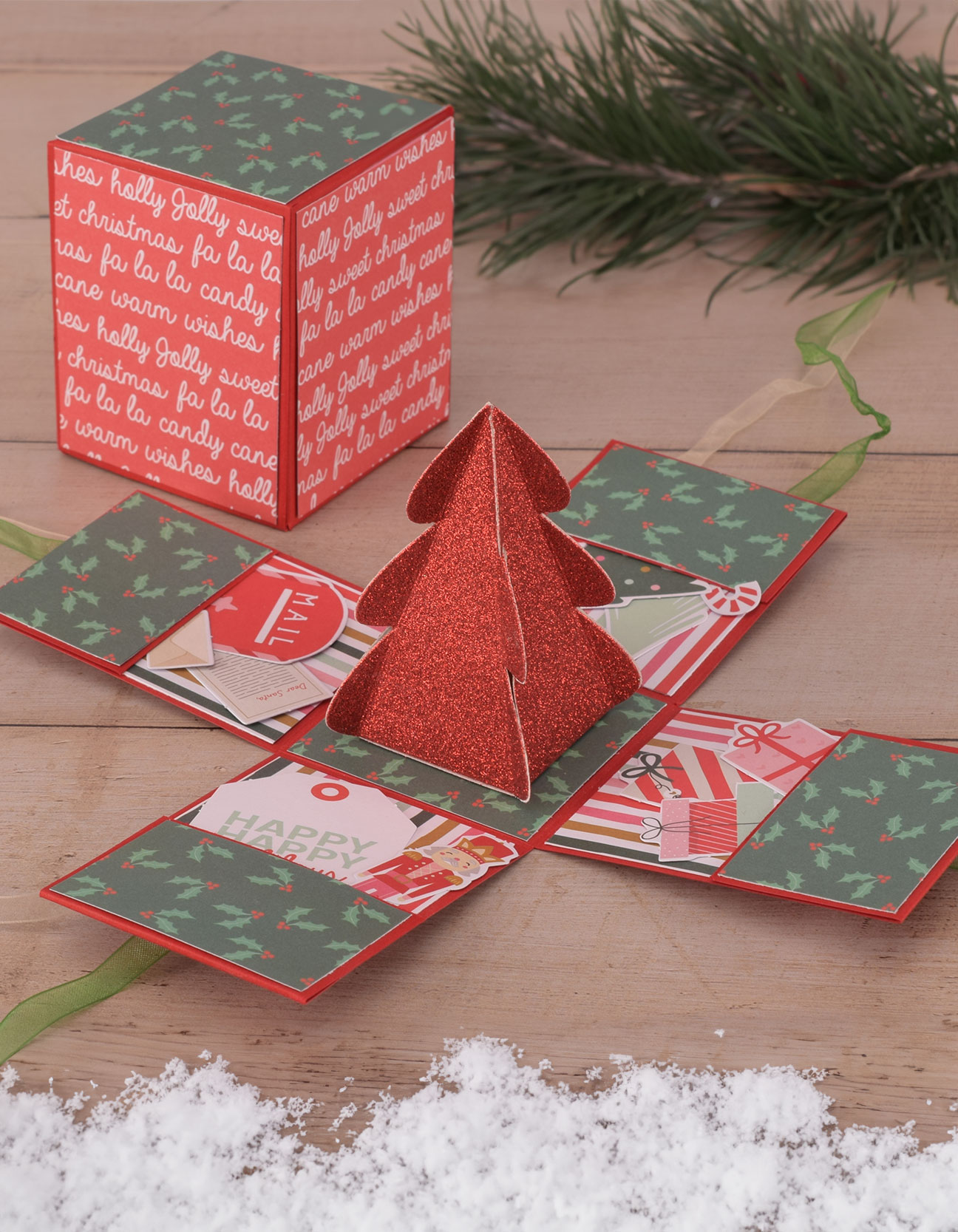Aufgrund des hohen Aufkommens kann sich die Zustellung Ihres Pakets verzögern


Let’s get started with: Macramé
Macramé is perhaps the hobby that requires the least to achieve a fantastic imaginative result. Once you've mastered tying the knots and figuring out the right patterns, you can make almost anything!
Before we dive into the world of macramé and guide you through it, let's explain what it is, what materials you need, and what you can create.
Are you new to macramé? No worries. After reading this blog, you'll know everything you need to know and can get started on your own. From beautiful bracelets to cosy plant hangers, Vaessen Creative is here to help.
What is macramé exactly?
Did you know that macramé has been around for centuries? That's not surprising, either. Macramé is a technique where you tie knots to create a specific pattern. You can create all sorts of things with the patterns you choose for your macramé project.
In the past, this technique was mainly used for making baskets and holders to move goods. Nowadays, macramé is primarily used to create crafts such as bracelets, plant hangers, and home decorations.
So, the art of knotting is centuries old. Today, you'll learn how to use this technique to unleash your creativity!
Is macramé difficult?
If you're even a little bit handy or have a knack for crafting, macramé is quite simple. Making and tying knots isn't very hard. It can be challenging, however, to come up with the right patterns, structure, and lengths for a design on your own. Luckily, you can find endless designs with instructions.
The essentials for macramé
A good start is half the battle. The same goes for macramé. You won't spend long gathering the right supplies to get started.
All you need for macramé is:
- Macramé cord or rope
- A stick or (wooden) ring
- A design or idea
A stick or wooden ring is optional. It depends entirely on what you want to make and how you want it to look. However, it is often helpful to attach the end of the rope somewhere so you can keep it tight.
Which rope is suitable for macramé?
Almost any rope is suitable for practising the macramé technique. However, not all ropes are equally elegant for making a bracelet or hanging in your living room.
Macramé doesn't have to cost much, but investing in the right cord can significantly improve the process and the result. Knotting goes much smoother with different types of rope or cord.
To start, you can choose a cotton cord of 4 or 5 millimetres. Furthermore, you can choose rope or cord made up of 3 strands or even 72 strands. The structure gives a different effect, and the number of strands is a matter of preference.
Tip! Opt for thick rope with more than 45 strands that you can comb out. This has a nice effect on the end of your rope or the edge of your macramé project.
How does macramé work?
The principle of macramé is quite simple. There are a number of basic knots that you tie and repeat in a certain way to create a pattern. You could even say that macramé is nothing more than gracefully tying knots.
You can approach the technique in two different ways: from a single starting point or from multiple nodes. A bracelet eventually forms into a single band, while a plant hanger or dream catcher is much wider.
It's important to master a few knots that you can use to create patterns.
Macramé knots
There are countless macramé knots out there. That's great because it means you can truly get creative with your creations. On the other hand, it can be pretty overwhelming for a beginner.
To start with, there are three knots. We advise practising the following three to lay the foundation for your macramé adventure.
1. Lark’s head knot
The most commonly used knot or loop is the Lark’s head knot. This is often used to attach the rope to a stick, ring, or branch:
- Fold the rope in half.
- Insert the loop under the stick.
- Pull the ends through the loop.
- Pull the threads tight around the stick.
2. Square knot
This is the first decorative knot with a flat look that you can use to add patterns to your creations. You use three parts of rope for this:
- Place the left strand over the middle strand.
- Place the right strand down over the left strand.
- Insert the right strand under the left and middle strands.
- Pull the right strand through the loop formed by the left and middle strands.
You now have a half square knot. Repeat the above steps but mirrored. The result is a complete square knot.
3. Double half-hitch
The double half-hitch knot is a bit more challenging. You are going to create a bound effect with multiple pieces of rope:
- Make a loop from the string and place it on the other cord.
- Wrap the remaining piece of rope around the loop (from top to bottom or vice versa).
- Pull the end through the loop that protrudes and is somewhat entangled.
- Gently pull it tight.
Once you have mastered these knots, you're well on your way. From here, you can continue to learn and practice with variations. Also, check out the video below with 16 macramé knots for beginners!
What can you make with macramé?
We'd almost want to ask you, 'What can’t you make?! ' Macramé is incredibly versatile. The range of items you can make is already quite broad, but the styles you can use are even broader.
For example, wood or bamboo and white macramé cord give an Ibiza style, but you can also go all out with various colours. The most common macramé creations are:
- Bracelets: To make bracelets, use slightly thinner but softer cords, knots that are not too thick, and endless colour combinations.
- Plant hangers: Especially hanging plants do well in a plant hanger or holder. Attach a plant hanger to the ceiling and let the hanging plant grow freely.
- Wall hangings: You can make wall hangings from short sticks or branches to lengths of meters long. Instead of a painting, hang a wall hanging on the wall.
- Dreamcatchers: Do you want to make your dreamcatcher to ward off bad dreams and catch good ones? Macramé is the way to go.
- Curtains: You need to be a bit enthusiastic and patient to make curtains with macramé, but nothing is impossible. You can also create an insect screen with a simple cord and a stick.
- Table decorations: Tablecloths, placemats, and coasters. Decorate your tabletop with homemade creations.
- Keychains and bookmarks: To start small but still make something you'll be reminded of daily, keychains and bookmarks are perfect. Also, a great gift idea!
Starting with the macramé kit
Get started with your first DIY macramé projects with our starter kit. The macramé kit includes all the materials you need, including a manual for each depicted project, where we'll guide you step by step. We couldn't make it any easier if we tried!
Macramé tips from Vaessen Creative
You know what macramé is, how the principle works, what you need, which knots to make and how, and what you can make. The only thing left..
- Tips to make your adventure even smoother
- Examples to inspire you
- Time to practice, practice and practice
We'll help you get started and teach you some of the tricks of the trade that we've discovered over the years.
1. Start small
You've become extremely enthusiastic about starting, and we understand that. Knotting is easy to understand quickly, but the patterns may be a bit more complicated. Don't be discouraged by the complexity, and start simple. It might be a better start to practice with a bracelet than to make a curtain right away.
2. Seek guidance
Whether it's with our starter kit or a tutorial, look for guides from others that you can use. It's much easier to learn the tricks of the trade with a design that's already been thought out, made, and tested. Later, you can always design and create your own designs. Also, read our blog: Macramé for beginners.
3. Use designs, add creativity
The lengths of rope and patterns, including sticks, are often already thought out. Use these supplies as a basis. The colours and thicknesses of the rope are suitable for adding your own touch. Also, add extras like beads or comb the rope out for a playful effect.
4. Give yourself room to play
If a guide or tutorial prescribes a rope of a specific size, it may be wise to give yourself some leeway and cut the rope slightly longer. You can always remove excess rope later.
5. Save your scraps
Throwing away scraps of rope, beads, and wood is a waste. Keep them in a bin, and who knows, you might be able to finish projects with your scrap bin. It's also a way to be sustainable in your crafts
6. Keep practicing
The best tip we can give before you start... keep practising! Practice and learn new knots until you can apply them smoothly. Gradually expand and experiment with larger and more complex projects.



